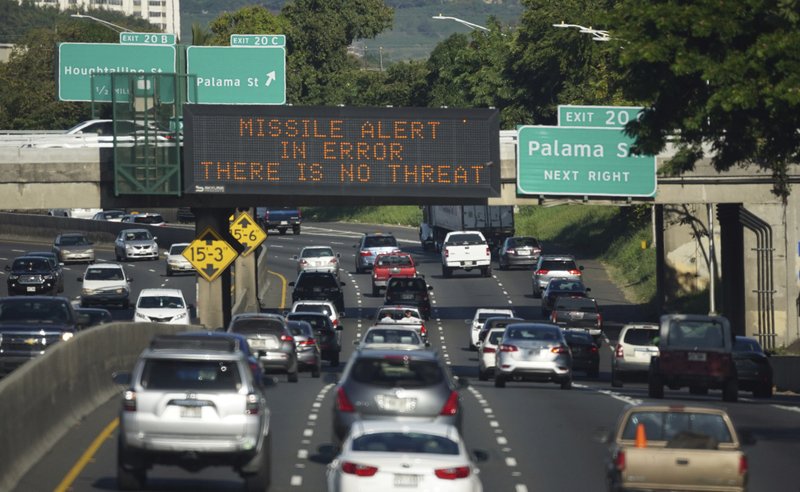HONOLULU -- A blunder that caused more than a million people in Hawaii to fear that they were about to be struck by a nuclear missile fed skepticism Sunday about the government's ability to keep them informed in a real emergency.
Residents and tourists alike remained rattled a day after the mistaken alert was blasted out to cellphones across the islands with a warning to seek immediate shelter and the ominous statement "This is not a drill."
"My confidence in our so-called leaders' ability to disseminate this vital information has certainly been tarnished," said Patrick Day, who sprang from bed when the alert was issued Saturday morning. "I would have to think twice before acting on any future advisory."
Authorities said the warning was sent during a shift change at the state's Emergency Management Agency when someone doing a routine test hit the live alert button.
State officials tried to assure residents there would be no repeat false alarms. The agency changed protocols to require that two people send an alert and made it easier to cancel a false alarm -- a process that took nearly 40 minutes.
The error sparked a doomsday panic across the islands. Parents clutched their children, huddled in bathtubs and said prayers. Drivers abandoned cars on a highway and took shelter in a tunnel. Others resigned themselves to a fate they could not control and simply waited for the attack.
The 911 system for the island of Oahu was overwhelmed with more than 5,000 calls. There were no major emergencies during the false alarm, Mayor Kirk Caldwell said.
An investigation into what went wrong was underway Sunday at the Federal Communications Commission.
The Hawaiian government "did not have reasonable safeguards or process controls in place to prevent the transmission of a false alert," FCC Chairman Ajit Pai said in a statement, calling the mistake "absolutely unacceptable."
"False alerts undermine public confidence in the alerting system and thus reduce their effectiveness during real emergencies," he said.
Homeland Security Secretary Kirstjen Nielsen urged Americans not to lose faith in their government.
"I would hate for anybody not to abide by alerts and warnings coming from government systems," Nielsen said on "Fox News Sunday." "They can trust government systems. We test them every day. This is a very unfortunate mistake, but these alerts are vital. Seconds and minutes can save lives."
Lisa Foxen, a social worker and mother of two young children in east Honolulu, said she expects Hawaii officials to make necessary changes and restore trust in the system. The best thing to come out of the scare, she said, was that it pushed her family to come up with a plan if there is a real threat.
"I kind of was just almost like a deer in headlights," she said. "I knew what to do in a hurricane. I knew what to do in an earthquake. But the missile thing is new to me."
The false alarm triggered a broader discussion about national security at a time when North Korea has been flexing its muscles by launching test missiles and bragging about its nuclear capability. Its leader, Kim Jong Un, has also exchanged insults on Twitter with President Donald Trump about their arsenals.
The standoff has whipped up nuclear fears on Hawaii and led the island paradise to revive Cold War-era siren tests that drew international attention.
Rep. Tusi Gabbard, a Hawaii Democrat, said officials should be held accountable for the "epic failure of leadership" behind the warning. She said the nuclear threat underscored the need for Trump to meet with Kim to work out differences without preconditions.
"The people of Hawaii are paying the price now for decades of failed leadership in this country" by setting "unrealistic preconditions," she said. "The leaders of this country need to experience that same visceral understanding of how lives are at stake."
Philip Simmons, an orchestral conductor, said the false alarm was one of the most horrifying events of his life, and he had no idea what to do. He said everyone from Gov. David Ige to the president should resign.
"The government has totally blown this," Simmons said. "They're completely inept at protecting the people of this country and notifying them of what's happening."
The mistake was not the first for the state's warning system. During a test last month, 12 of the state's 386 sirens played an ambulance siren. In the tourist hub of Waikiki, the sirens were barely audible, prompting officials to add more sirens and reposition ones already in place.
National on 01/15/2018